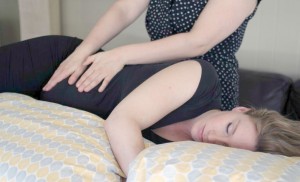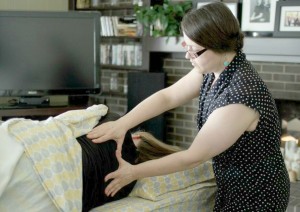- mamajanemassage
- Aug, 03, 2015
- Birth Doula, Mama Jane Massage, Pregnancy, Prenatal Massage
- Comments Off on The Benefits of Massage During Pregnancy
By Liz Green, CD (toLabor), LMT, CR
Prenatal massage helps to manage the aches and pains of pregnancy, increases quality of sleep, improves mood, decreases edema, releases hormones in the body that counteract stress, fear and anxiety, and it feels great for baby too! It can help pregnant bodies to maintain good balance and alignment in the pelvis which can encourage baby to have good positioning in the uterus. This has the potential to decrease the length of labor and facilitates quicker postpartum healing. Healthy tissues have better blood flow, stretch easier and heal faster.
Massage is safe for the client and baby anytime during a healthy, low-risk pregnancy – from conception until baby comes. When complications arise during pregnancy, the client should get approval from their healthcare provider before getting a massage, but it is usually still safe in most circumstances.
I only offer prenatal massage in a side-lying position – this means the client lies on their left and right sides during the massage. With the use of various pillows and bolsters, it is a comfortable and safe position for the client to lie for an extended period. If I need the client to be face-up during the massage, I will do a semi-reclined position with an extra small cushion under their right hip to ensure the baby isn’t resting on the vena cava, and potentially decreasing blood flow to the baby.
While prenatal massage tends to focus extra time on the lower back, hips, posterior pelvis (the booty), and legs during a prenatal treatment, a full-body massage is safe and provides the most effective overall relaxation for the client. There are only a few areas I avoid or use extra precautions. Pregnant clients have increased risk of deep vein thrombosis so I avoid or use caution on the inside of the leg, a common area for blood clots, to avoid potentially releasing a blood clot into the lungs. Belly work can be very relaxing, and it can also address round and/or broad uterine ligament pain, but I only massage the client’s belly in the second and third trimesters and only by request or with permission of the client. I generally avoid the psoas (hip flexor, accessed on the inside edge of the hip bones) or only apply gentle pressure there, since to palpate it, I have to enter ‘baby space’ in the lower belly. While I can provide normal massage techniques to the ankles and feet, I do avoid vigorous stimulation to the inside ankles since that is a reflexology point for the uterus.
All pregnant clients deserve weekly massages, but at a minimum one massage a month is recommended, or more if a client starts to develop more body discomfort or pain. It is an effective, safe and enjoyable way for prenatal clients to manage how their bodies change during pregnancy and prepare for birth.
This article also appeared on the Cocoon Birth website.









